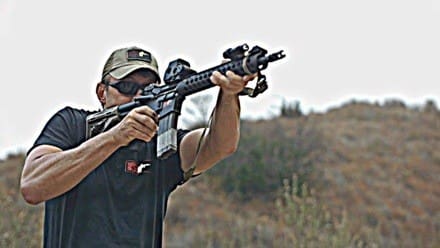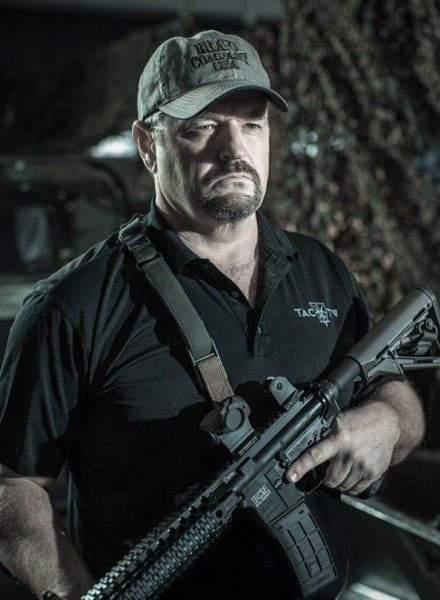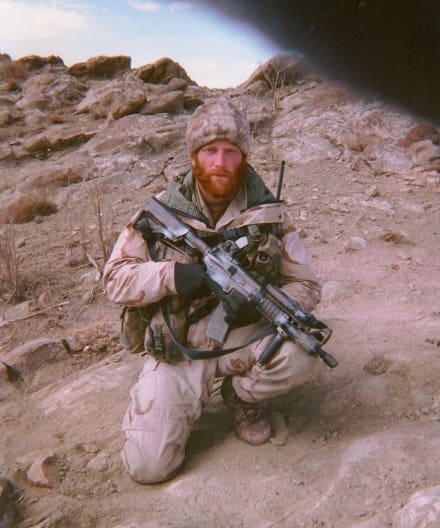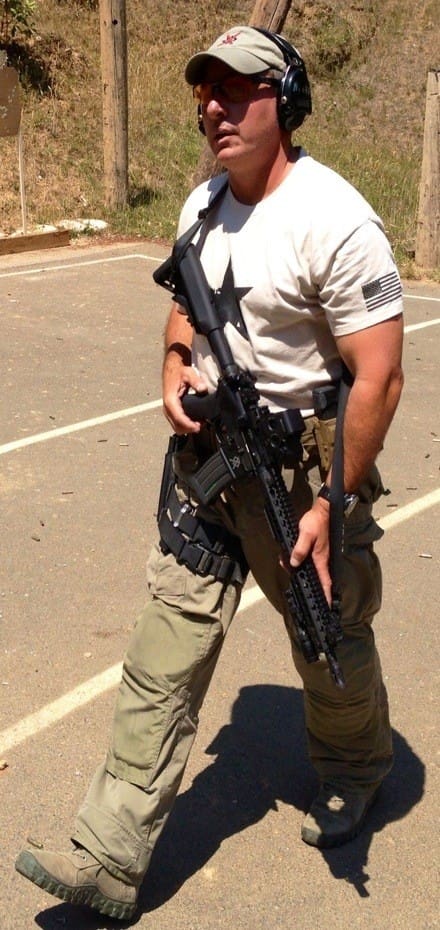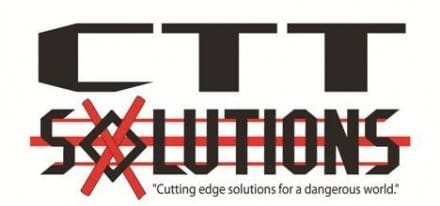The way I define it this style of shooting applies to any discipline of shooting from tactical/defensive shooting to competitive shooting.
My first exposure to action type shooting was as a tactical shooter, after completing the Special Forces Qualification Course I attended SFAUC (Special Forces Advanced Urban Combat Course); basically shooting and CQB.
I had a passion for it and it was part of my job so I spent a good deal of time becoming as good a tactical shooter as I could be. I eventually took over as the Primary Instructor for Combat Marksmanship for an entire Special Forces Group. At this point I considered myself a pretty good shooter, humble but competent.
I decided to go shoot a USPSA match and promptly discovered what I didn’t know about shooting. I recall one event in particular that will drive me into the meat of this article. The classifier for that match was the El Presidente: three targets 10 yards away, turn and shoot 2 rounds per target reload then 2 more rounds per target.
When I shot it was something like bang bang *pause* bang bang *pause* bang bang reload then the same. An experienced competitive shooter shot it next and it went like this: ‘bang bang bang bang bang bang’ reload and then the same. I couldn’t understand what just happened and even accused the guy of just shooting AT the targets and not seeing anything. He assured me that he saw everything and his points reflected as much. I had to figure out what this was all about!
So I shot 2 shots per target on that multiple target array the same way nearly every tactical shooter I have encountered will shoot it. Target plus gun equals double tap, big pause moving to the next target then double tap etc.
Let’s dig into the curse of the double tap and how it causes failure for most shooters.
Regardless of other things I’ve read and even once believed when a shooter shoots a “double tap” they are seeing something for an aiming reference and running the trigger 2 times as fast as they can make it go. In that case the shooter is absolutely HOPING that their trigger speed and control over the gun will keep both rounds on the target. Most times it doesn’t. There’s a problem with trigger speed and trigger pressure for pistols.
When we run triggers fast some movement is going to come into the gun. Most pistol shooters put way too much pressure into running the trigger. Many times that first shot gets pushed low and to the support hand side, then since the shooter is firing the gun at a cyclic rate the gun fires again, and if the shooters doesn’t have good control over recoil the gun is not on the target when it fires again. The shooter that was hoping to win by running triggers fast ends up loosing hard core. Fast trigger speed doesn’t always equate to fast scoring speed.
Scoring speed is where it’s at and that’s what I train, how to score more points in less time. Some things I have found to be crucial are seeing and efficiency. Opening up to what is possible for you as the shooter – how fast we can easily process lots of information – allows us to be much more efficient and therefore faster and more accurate. There’s another problem that pops up for tactical shooters: “if you are shooting 2 rounds you see 3 sight pictures”.
The additional sight picture is taught as being all about follow though and for the tactical shooter ensuring the threat is eliminated. I believe once we get wrapped around how incredibly fast we can process information we can accomplish all of those task quicker and get on to the next piece of work.
A multiple target set up like what I use in the Time Machine exercise is a great tool to get us plugged into scoring speed and not focus on trigger speed. I believe that we need to plug into the gun and let it tell us how fast to shoot. Give it a shot and let me know what you think.
I think you’ll discover that scoring speed is what matters and break the curse of the double tap!
-Frank Proctor
Frank Proctor has served over 18 years in the military, the last 11 of those in US Army Special Forces. During his multiple combat tours in Afghanistan & Iraq he had the privilege to serve with and learn from many seasoned veteran Special Forces Operators so their combined years of knowledge and experience has helped him to become a better operator & instructor. While serving as an instructor at the Special Forces Advanced Urban Combat Course he was drawn to competitive shooting. He has since earned the USPSA Grand Master ranking in the Limited Division and Master ranking in the IDPA Stock Service Pistol division. He learned a great deal from shooting in competition and this has helped him to become to become a better tactical shooter. Frank is one of the few individuals able to bring the experiences of U.S. Army Special Forces, Competitive Shooting, and veteran Instructor to every class.
All this experience combines to make Frank Proctor a well-rounded shooter and instructor capable of helping you to achieve your goal of becoming a better shooter.
Gunfighter Moment is a weekly feature brought to you by Alias Training & Security Services. Each week Alias brings us a different Trainer and in turn they offer some words of wisdom.


